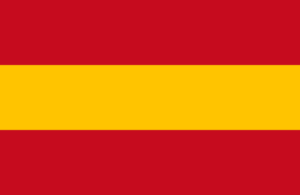On 15 December, the Council of Ministers approved a Royal Decree 1036/2017 regulating the civil use of Unmanned Aircraft Systems (UAS) more commonly known as drones.
This new regulation directly replaces the former temporary regulation in Articles 50 and 51 of Act 18/2014 on urgent measures for development, competitiveness and efficiency.
This new regulation allows flight operations of UAS, which were formerly prohibited, provided several requirements are met. Importantly now UAS are permitted to fly over populated areas (including accumulations of buildings and crowds), during night time (between sunset and sunrise) and within areas in which flight is controlled. To do so, flight operators must (i) carry out aviation security analysis and (ii) obtain authorization from the State Aviation Safety Agency.
The security analysis must assess the risks that may arise from the flight operation(s) and specify the particular measures that the operator plans to put in place in order to mitigate them. A specific security analysis is required for each operation or set of operations that share the same set of risks (eg, flight operations during one week over the city of Granada).
Under a specific authorization regime and with specific requirements for each new scenario, it will be possible to:
– Operations on urban nucleus (VLOS) and agglomerations of people
– BVLOS operations with MTOW aircraft> 2kg
– Night operations
– Operations in controlled airspace
– Operations within the increased visual range (EVLOS) under declarative regime.
The limitations or restrictions that are imposed on each of the operations are the following:
– Operations on urban nucleus (VLOS) and agglomerations of people:
Do not fly with MTOW drones <10kg, less than 100m from the operator with a 120m roof and in a completely enclosed and cordoned area or ensuring a minimum distance of 150m from buildings and structures and 50m from people not involved in the operation . In addition, a specific safety aeronautical study and express authorization will be required.
– BVLOS operations with MTOW aircraft> 2kg:
The drone must have an approved detection and evasion system (Detect & Avoid). In addition, a specific safety aeronautical study and express authorization will be required.
– Night operations:
The RPA must have a lighting system that allows its vision at night, in addition to requiring a specific aeronautical safety study and an express authorization.
– Operations in controlled airspace:
The equipment will be required to have an approved detection and evasion system (Detect & Avoid) and with an S-mode transponder. In addition, the pilot must have radiophonist knowledge and a specific aeronautical safety study and express authorization and a specific authorization will be required. coordination with the air traffic control service.
In addition, in the additional provisions, the draft indicated variations in the training of drone pilots or in the maintenance of practical pilot certificates.
The draft established the need to perform a registry of remotely piloted aircraft in addition to establishing a deadline to communicate the ownership of aircraft not previously registered.
The Royal Decree addresses the regulation on the use of drones in a technical way, but leaves unregulated certain issues like privacy, personal data protection, civil liability, cybersecurity and the use of radio frequencies.
The Ministry of Public Works and Transport also announced a Drones Strategic Plan to be published in the next few months. This plan aims to complement the new Royal Decree and its implementation.
Sources:

